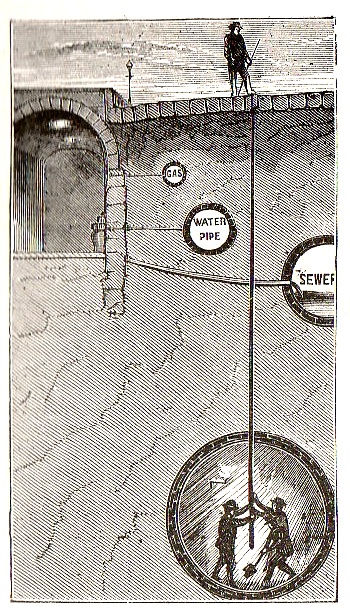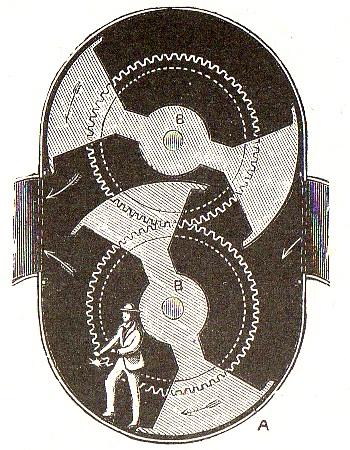JF Ptak Science Books Post 1403
"Certainly the most novel, if not the most successful, enterprise that New York has seen for many a day is the pneumatic tunnel under Broadway. A myth, or a humbug, it has hitherto been called by everybody who has been excluded from its interior; but hereafter the incredulous public can have the opportunity of examining the undertaking and judging of its merits." --The New York Times, on the opening of the pneumatic tunnel, September 1870.
These unusual images are all only so if they are removed from their context, taken from their stories, their explanations lost. But the fact of the matter is simple--they show cross sections of some construction elements of "the pneumatic tunnel under Broadway, N.Y.C." as it appeared in the Scientific American for 5 March 1870. It was an experimental line, and did not really deserve the description received from the Times. The idea for an underground such as this was the brainchild of Alfred Ely Beach, and was basically a single-train, single-station, one-block system established for demonstration purposes, and was kept in operation from 1870 to 1873. Technology overtook Beach's idea of pneumatic propulsion with the development of electric trains, making the forced-air idea obsolete in short order.
The images, without explanation, their purpose is well hidden.
The first example simply depicts the way in which the progress of the tunnel was measured and mapped. The two men underground sent up a series of pipes to the surface, under the very paving stone of Broadway, where a surveyor would make the spot where the pipes met the surface. (We are told that this work was done at night, when the streets were empty.) Any number of stories could be made of this image--all stretching beyond its intended purpose.
 This machine below could be virtually anything in the mind of anyone, except of course for its real purpose, which was to power the train. It is a cross section of the apparatus, showing its two massive fans with a figure of a man added to show scale.
This machine below could be virtually anything in the mind of anyone, except of course for its real purpose, which was to power the train. It is a cross section of the apparatus, showing its two massive fans with a figure of a man added to show scale.
"The power transfer is one of the most simple things imaginable. Air is forced into the tunnel by a gigantic blowing engine made by P. H. & F. M. Roots, of Connersville, Ind., a section of which is shown in Fig. 7. [missing] This blower is actuated by a steam engine of 100-horse power, and is calculated to deliver when worked at maximum speed, a volume of 100,000 cubic feet of air per minute. A pressure of one fourth of one pound to the square inch would be an aggregate of three-fourths of a tun on the end of the car, far more than required for propulsion."



Comments